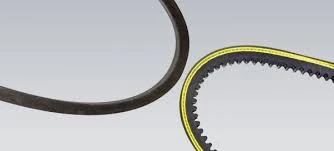- Arabic
- French
- Russian
- Spanish
- Portuguese
- Turkish
- Armenian
- English
- Albanian
- Amharic
- Azerbaijani
- Basque
- Belarusian
- Bengali
- Bosnian
- Bulgarian
- Catalan
- Cebuano
- Corsican
- Croatian
- Czech
- Danish
- Dutch
- Afrikaans
- Esperanto
- Estonian
- Finnish
- Frisian
- Galician
- Georgian
- German
- Greek
- Gujarati
- Haitian Creole
- hausa
- hawaiian
- Hebrew
- Hindi
- Miao
- Hungarian
- Icelandic
- igbo
- Indonesian
- irish
- Italian
- Japanese
- Javanese
- Kannada
- kazakh
- Khmer
- Rwandese
- Korean
- Kurdish
- Kyrgyz
- Lao
- Latin
- Latvian
- Lithuanian
- Luxembourgish
- Macedonian
- Malgashi
- Malay
- Malayalam
- Maltese
- Maori
- Marathi
- Mongolian
- Myanmar
- Nepali
- Norwegian
- Norwegian
- Occitan
- Pashto
- Persian
- Polish
- Punjabi
- Romanian
- Samoan
- Scottish Gaelic
- Serbian
- Sesotho
- Shona
- Sindhi
- Sinhala
- Slovak
- Slovenian
- Somali
- Sundanese
- Swahili
- Swedish
- Tagalog
- Tajik
- Tamil
- Tatar
- Telugu
- Thai
- Turkmen
- Ukrainian
- Urdu
- Uighur
- Uzbek
- Vietnamese
- Welsh
- Bantu
- Yiddish
- Yoruba
- Zulu
Abu . 07, 2024 20:40 Back to list
Understanding the Importance and Functionality of Drive Belts in Mechanical Systems
Understanding the Importance of Drive Belts in Automotive Systems
Drive belts are crucial components within the automotive industry, playing a significant role in the functionality and efficiency of various systems in vehicles. Often overlooked, these belts are integral to the power transmission from the engine to various accessories, thereby ensuring the smooth operation of a vehicle. In this article, we will explore the types of drive belts, their functions, maintenance needs, and the implications of neglecting them.
Types of Drive Belts
There are primarily two types of drive belts commonly used in vehicles the serpentine belt and the timing belt.
1. Serpentine Belt This single belt snakes around multiple pulleys, driving various components such as the alternator, power steering pump, water pump, and air conditioning compressor. Its design allows it to provide power to multiple systems simultaneously, which helps reduce engine weight and improve efficiency. Most modern vehicles utilize serpentine belts due to their simplicity and effectiveness.
2. Timing Belt Unlike the serpentine belt, the timing belt's primary function is to synchronize the rotation of the crankshaft and camshaft, ensuring that the engine’s valves open and close at the correct timing in relation to the pistons. This synchronization is crucial for the engine's performance and efficiency. Timing belts are generally made from reinforced rubber and require replacement at specific intervals to prevent catastrophic engine failures.
Functions of Drive Belts
The primary function of drive belts is to transfer rotational energy from the engine to various components within a vehicle
. In doing so, they enable essential accessories to operate, includingdrive belt

- Alternator Generates electricity to recharge the vehicle's battery and power the electrical systems. - Water Pump Circulates coolant through the engine to regulate temperature and prevent overheating. - Power Steering Pump Provides hydraulic pressure for easier steering. - Air Conditioning Compressor Enables the air conditioning system to function effectively, ensuring passenger comfort.
Without properly functioning drive belts, these accessories cannot work, leading to a decline in vehicle performance and comfort.
Maintenance and Replacement
Maintaining drive belts is critical to vehicle health. Regular inspections for wear, fraying, and glazing can prevent unexpected failures. Mechanics generally recommend replacing serpentine belts every 60,000 to 100,000 miles, while timing belts often require replacement between 60,000 to 100,000 miles, depending on the manufacturer’s specifications.
Signs of a failing drive belt include squeaking or squealing noises, visible wear, or loss of power to accessories. Ignoring these signs can lead to complete belt failure, which may cause extensive engine damage, especially in the case of timing belt issues.
Conclusion
Drive belts are small yet vital components of vehicle operation, ensuring that various systems function harmoniously. Understanding their types, functions, and the importance of maintenance will empower vehicle owners to take better care of their automobiles. By being proactive about drive belt inspection and replacement, one can avoid costly repairs and ensure a smoother, more efficient driving experience. In essence, while they may be hidden beneath the hood, the significance of drive belts in vehicle functionality is undeniable. Regular care and attention to these components can lead to a more reliable vehicle and safer driving conditions.
-
Korean Auto Parts Timing Belt 24312-37500 For Hyundai/Kia
NewsMar.07,2025
-
7PK2300 90916-T2024 RIBBED BELT POLY V BELT PK BELT
NewsMar.07,2025
-
Chinese Auto Belt Factory 310-2M-22 For BMW/Mercedes-Benz
NewsMar.07,2025
-
Chinese Auto Belt Factory 310-2M-22 For BMW/Mercedes-Benz
NewsMar.07,2025
-
90916-02660 PK Belt 6PK1680 For Toyota
NewsMar.07,2025
-
drive belt serpentine belt
NewsMar.07,2025

